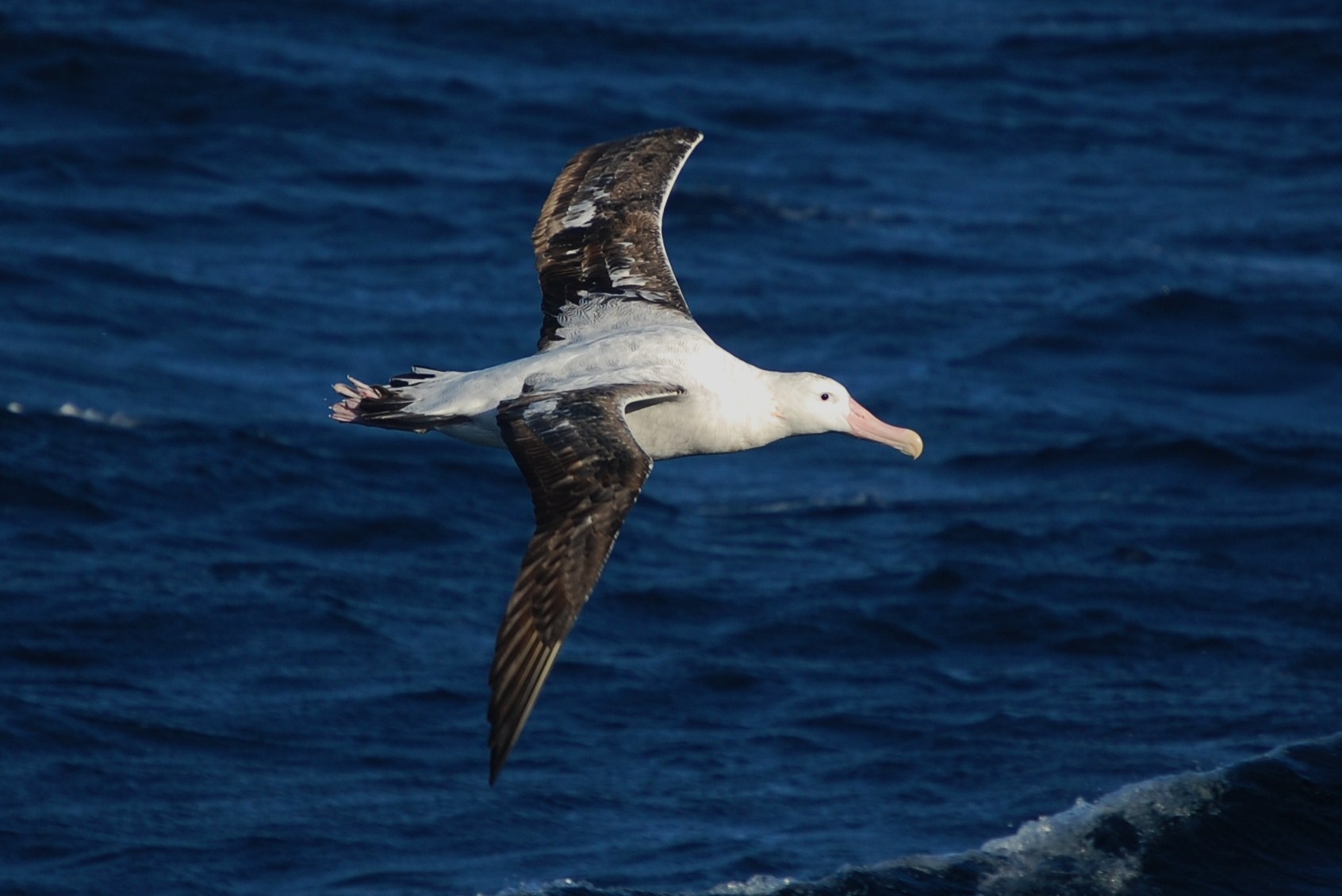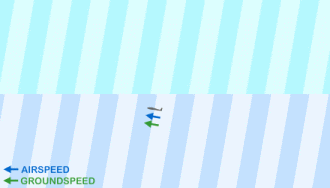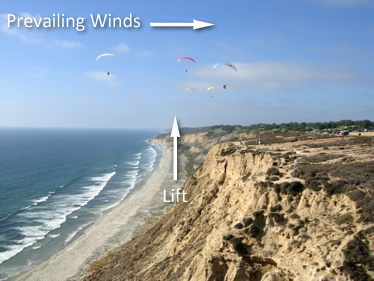The wandering albatross is known for it’s ability to travel for many days over the open ocean. It can effortlessly glide for miles without flapping, and even drink salt water.
The secret to their amazing flying abilities lies in their mastery of air currents. The wandering albatross uses both dynamic soaring and the principle of ridge lift to maintain flight over the open ocean without a need for flapping. Dynamic soaring is used when there are two planes of air moving at different velocities.
By flying into the wind to gain altitude and then turning and flying with the wind to gain speed, and repeating the process the bird can actually increase its velocity and soar along at great speeds.
Ridge lift is another method of maintaining flight with little to no flapping by the bird. Ridge lift occurs when wind hits a wall of some soft, such as a cliff or ocean wave. the path of the air is diverted upwards creating a zone of lift for the birds to glide on.
With moving waves and shifting winds, it is possible for the birds to glide along with these currents for miles.
In addition to the ability to expertly use air currents to soar for miles, the wandering albatross has special tendons in it’s wings that lock then in place when fully extended to conserve energy. this means that on a good day, the most physically demanding part of a journey for the albatross is taking off and landing. These attributes, coupled with a glide ratio around 20 : 1 make for a bird that can make some quite fantastic journeys.
Sources:



4 Comments
Lorena Barba posted on December 13, 2011 at 8:21 pm
HI Alex,
I’ve added captions to the images indicating that they are Wikipedia Commons.
We didn’t cover soaring in class, but if we had more time, I would’ve liked to.
Lorena Barba posted on December 13, 2011 at 8:23 pm
Oh! and a little grammar tip for you 🙂
http://its-not-its.info/
Can you find where it is used wrong in your article?
Bradley Chiga posted on December 16, 2011 at 12:30 am
This is really interesting. I wonder how engineers can utilize these effects to improve flight efficiency in the future….. Obviously human generated flight acts under different principles than gliding, but if small airplanes could utilize changes in pressure and wind speed, it may make for more productive flight and cut down on energy requirements… hmmm……
DS posted on December 22, 2011 at 8:48 am
Here is the full version of that wiki animation:
http://www.youtube.com/watch?v=SVN-oF6tPLc
And here an interesting NASA drone project based on dynamic soaring:
http://www.youtube.com/watch?v=F4zEaYl01Uw